ChicGeek Comment The Fashion Ouroboros: Is Fashion All Out Of Ideas?
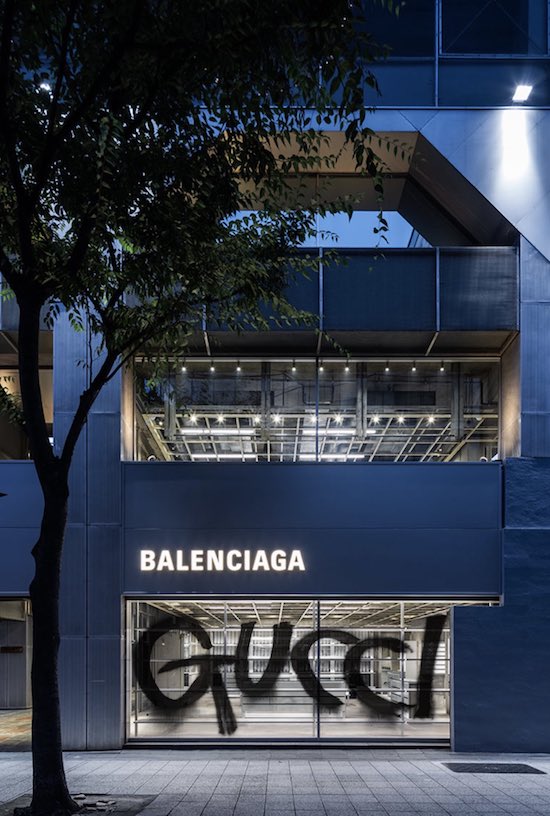 No creative worth their salt will ever admit to being out of ideas. Even no idea is an idea these days. Collabs. have become the go-to to fill the gaps in fashion’s creativity and its continual appetite for product over the past decade. Two empty heads are always better than one?
No creative worth their salt will ever admit to being out of ideas. Even no idea is an idea these days. Collabs. have become the go-to to fill the gaps in fashion’s creativity and its continual appetite for product over the past decade. Two empty heads are always better than one?
Fashion is a cycle and like the Ouroboros, an ancient symbol depicting a serpent or dragon eating its own tail, it goes around and around. But, today, that coil has become so tight it has almost devoured itself. In a ‘pop will eat itself’ moment, former rivals are now collaborating and even swapping creative roles, while retailers, desperate for new ideas are trying to incubate new designers, labels and ideas to fill the ideas vacuum.
Is fashion officially out of ideas?
The biggest ‘hacking’ of the season, (not a collab. anymore - FYI), was the tie up between Balenciaga and Gucci. Both Kering brands, and in Gucci’s centenary year, Gucci’s ‘Aria’ collection, meaning air in Italian, featured no-doubt sell out product the resellers will only dream about.
Left - Balenciaga & Gucci's 'Hack' in retail form
Tagged as Balenciagucci or (Gucciaga), the internet blew up in April when Alessandro Michele added Balenciaga’s silhouettes and branding across Gucci product.
Two of the biggest and most desirable names in luxury fashion merging like this is unprecedented. A classic Jackie bag was emblazoned with the diagonal Balenciaga font, while Balenciaga’s Triple S was reimagined with the recognisable Gucci Flora print.
If this wasn’t enough rehashing of ideas, the collection also mined the famous Tom Ford era of the mid to late 90’s, reproducing some of his vintage looks from the Gucci archive. Balenciaga’s creative director, Demna Gvasalia said on Instagram Stories after the Gucci show with regards to the homage to Tom Ford’s Gucci. “It really defined the decade in fashion, I think. But I love how today everything mixes in together — ’70s, ’90s, ’00s, etc. Anything is really possible and fashion is such a melting pot of the past, present, and future. That’s what makes it so special and intriguing I guess.”
This product will be in great demand - it isn’t currently available on the main Gucci website - and is therefore guaranteed that it will be swapping hands for a premium when it enters the market. While fun, it does a reek of an ideas cul-de-sac.
Mario Abad, Fashion Editor at Paper Magazine wrote on Twitter (Nov 8th) “Something about Balenciaga tagging their stores with “Gucci” to mark the collab’s launch is making me lose it.”
 The biggest ‘swap’ of the SS22 season, (not a collab. anymore - FYI), was Fendi by Versace, Versace by Fendi. Donatella Versace and Fendi’s Kim Jones swapped roles and designed collections for each other’s brands. Versace and Fendi, Capri Holdings and LVMH brands, respectively, unveiled “two iconic collections that celebrate their friendship and the cultural impact of Versace and Fendi.”
The biggest ‘swap’ of the SS22 season, (not a collab. anymore - FYI), was Fendi by Versace, Versace by Fendi. Donatella Versace and Fendi’s Kim Jones swapped roles and designed collections for each other’s brands. Versace and Fendi, Capri Holdings and LVMH brands, respectively, unveiled “two iconic collections that celebrate their friendship and the cultural impact of Versace and Fendi.”
Right - Versace's Medusa looks very natural with Fendi's Greek key
Labelled ‘Fendace’, the collection saw Fendi directors Kim Jones and Silvia Venturini Fendi create 25 Versace looks while Donatella Versace reciprocated with 25 Fendi ensembles. Items included Fendi Baguette bags with Medusa heads and Versace’s signature safety pins scattered across Fendi looks all set to hit stores next spring.
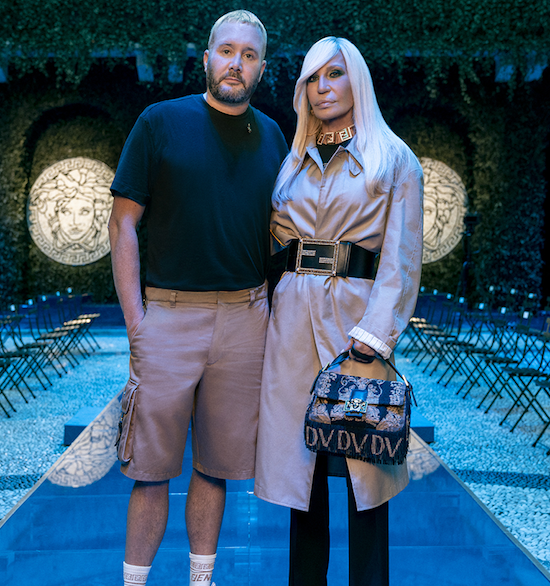 Considering Kim Jones only joined Fendi as artistic director of women's collections in September 2020, we’ve yet to clearly see what he can do with the brand. He is also men’s creative director at the giant, LVMH owned, Dior. Fashion conglomerates are finding it increasingly hard to attract big names designers to their houses. Note Daniel Lee just exciting Bottega Veneta.
Considering Kim Jones only joined Fendi as artistic director of women's collections in September 2020, we’ve yet to clearly see what he can do with the brand. He is also men’s creative director at the giant, LVMH owned, Dior. Fashion conglomerates are finding it increasingly hard to attract big names designers to their houses. Note Daniel Lee just exciting Bottega Veneta.
Left - Kim Jones & Donatella Versace at the launch of 'Fendace'
On the retailer front, MRPORTER.COM announced a competition to find the next menswear design stars to celebrate its 10th anniversary in April 2021. Called MR PORTER FUTURES, the three lucky candidates could not already own a registered or trademarked business with an annual turnover of over €10,000 and was open to anybody regardless of experience of background.
Sam Kershaw, Mr Porter buying director, “We have always been committed to championing a diverse mix of new and emerging designers throughout Mr Porter's decade in business, but if this year has taught us anything, it is that we have the responsibility to use our global platform to give equal opportunities to all new aspiring menswear voices, no matter their experience or background”
Announcing the winners in September 2021, MRPORTER said. “Fashion, after all, can be a tough place to succeed, and, if we’re being honest, isn’t quite as diverse as it could be. For all that it speaks to a global audience, the industry that drives it is largely centralised in just a handful of cities – historically New York, London, Milan and Paris – while talent is disproportionately drawn from a small number of high-profile schools.”
The winners began a year-long design programme to turn their ideas into reality. At the end of the year, they will debut their very own menswear collections exclusively on MR PORTER.
Exclusivity is the way forward for multi-brand luxury sites all battling for the same customers. This also offers MR PORTER the potential of a fresh wave of ideas and a newness that isn’t just another collaboration. It also looks as though it is supporting the fashion industry and diversity.
 Another brand desperate for cool is Tiffany & Co. A much-rumoured high profile collaboration between Supreme and Tiffany & Co. is set to drop this week.
Another brand desperate for cool is Tiffany & Co. A much-rumoured high profile collaboration between Supreme and Tiffany & Co. is set to drop this week.
Right - Would you return this to Tiffany? Tiffany & Co.s collab with Supreme
The VF and LVMH owned businesses’ collection called ‘Return To Tiffany’ is inspired by pieces originally launched in the 1960s and comprised of pendants, necklaces, bracelets, earrings, rings, and keyrings. Tiffany’s new CEO, Alexandre Arnault, was also the head of Rimowa when they did a collaboration with Supreme.
Fashion consumers have reached collaboration fatigue and this is why the big brands are spinning these as ‘hacks’ or ‘swaps’. It is also why they are upping the ante by partnering with brands of equal stature. Collaborations needed to get bigger to have any impact. Collaborations before were always a David and Goliath type relationship of big brand supporting little. There was no threat there and everybody knew who was the bigger and more important of the two. Where will the brands go from here?
These do look like a desperate grappling for new ideas and attention. Brands not coming up with fresh ideas and therefore not impressing the retailers is making them look elsewhere to nurture a new crop of ideas and designers, especially outside of the main fashion capitals. Considering fashion had something of a pandemic break, for the last 18 months, the latest round of shows in September didn’t feel like a group of creatives burgeoning with fresh ideas. It felt like an industry fully burnt out and these partnerships do nothing to argue against that.
Buy TheChicGeek's latest book FashionWankers - HERE
Check out TheChicGeek's new shop of fabulous plants & books - Give me Penis Cactus!
ChicGeek Comment Creative Influence
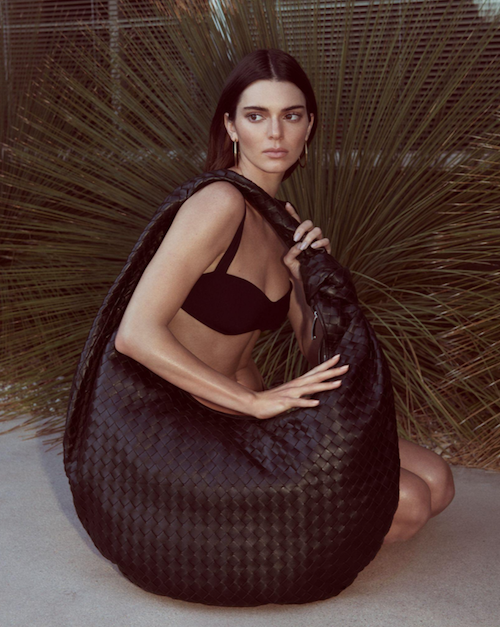 How valuable is influence? Modern marketeers are continually grappling with how to use ‘influence’ and where to put their time, focus and investment. ‘Influence’ is nothing new, but, thanks to social media, it has become the Holy Grail of marketing as traditional channels have declined. While measured in followers, engagement etc. the ultimate measurement is sales. And volumes speak volumes for the majority of brands.
How valuable is influence? Modern marketeers are continually grappling with how to use ‘influence’ and where to put their time, focus and investment. ‘Influence’ is nothing new, but, thanks to social media, it has become the Holy Grail of marketing as traditional channels have declined. While measured in followers, engagement etc. the ultimate measurement is sales. And volumes speak volumes for the majority of brands.
Left - Super-influencer Kendall Jenner was made Creative Director of designer multi-brand site FWRD
Brands have partnered and collaborated with influential people for many years, but, in order for them to be more invested, many brands are now appointing influencers as ‘Creative Directors’ or inviting them in as shareholders or investors. This creates longer term relationships and exclusive parties both invested in the success of the arrangement.
Recently in womenswear, PrettyLittleThing announced Love Island’s Molly-Mae Hague, while FRWD announced Kendall Jenner as Creative Directors.
Molly-Mae Hague, 22 years-old with 6 million followers on Instagram, found fame on the ITV dating show. In August, she was announced as UK and EU Creative Director as well as launching her first exclusively designed collection since her announcing new role.
She had previously worked with the brand as their UK Brand Ambassador ‘curating iconic edits’, BTS videos and podcast interviews. In her newly appointed role, the brand said Mae-Hague will take an active position in creatively directing upcoming campaigns for the brand and signing new faces within the UK and EU. Umar Kamani, CEO at PrettyLittleThing said, “This felt like a natural fit for us. Molly has been a huge part of our PrettyLittleThing journey.”
Amy Simon, Global Head of PR and VIP at PrettyLittleThing says, “We have been working with Molly for a few years, way back when she had a much smaller following and she has always been a supporter of the brand.
“We have followed Molly’s career and she was a no-brainer for us when it came to selecting our new Brand Ambassador for the UK. As our relationship has grown with Molly, her input into her shoots and creative has been amazing and she is the PLT customer. She knows what our PLT customer wants, so the choice to then take it a step further was for her to come on board as Creative Director.” says Simon.
Mae-Hague’s current role will be for one year and hopefully way beyond this says the brand.
“She will be meeting the teams at HQ regularly and working across ambassador shoots, seasonal campaigns, our Influencer Marketing strategies, showroom openings, YouTube and so much more. Her role as Creative Director goes beyond her previous Brand Ambassadorship.” says Simon.
Many people are quite sceptical and snobbish about influencers being appointed creative directors at brands. It could be viewed as a kick in the teeth for true designers and creatives, but on the other is this just a natural extension of the brand/influencer relationship?
“Influencers have been a huge part of the brand’s success since the beginning, and we work with influencers of a varied following across the globe.” says Simon.
“The influencer marketing team have great relationships with the ones that we work with and we know our audience relate to the Influencer. We regularly expand beyond just posts, we’ve had many successful edits, interviews for our podcast and collaborations across all our key markets.” she says.
In the US, luxury womenswear fashion destination FORWARD [FWRD], part of the REVOLVE Group has announced Kendall Jenner, 25, as the new Creative Director. Jenner has 192 million followers on Instagram.
“I grew up loving fashion and have been incredibly fortunate to work with some of the most brilliant people in this business. As FWRD’s Creative Director, I am excited to help curate the site’s offering with emerging designers and brands.” said Jenner on her appointment.
The multi-brand site says, as the new Creative Director, Jenner will be in charge of the look and feel of the site, curation of brands sold, monthly edits of must-have trends, styles, and looks, as well as marketing ideas, brand partnerships and brand activations. Jenner kicked off her new role during New York Fashion Week this month.
“Kendall as the Creative Director for FWRD is the perfect choice as we continue to invest in the next generation luxury consumer. We have always had an extreme admiration for Kendall’s style, creativity, and overall exquisite taste. Her multifaceted experience in the fashion industry and the vision she has outlined for the FWRD business has the potential to transform our business and the luxury business as a whole.” Michael Mente, Co-CEO and Co-Founder REVOLVE Group, Inc.
Revolve Group (RVLV) says it ‘is the next-generation fashion retailer for Millennial and Generation Z consumers’ with two sites REVOLVE and FORWARD. REVOLVE offers a more affordable assortment of premium female apparel and footwear, accessories, and beauty products from emerging established and owned brands. At FORWARD, they ‘offer a highly curated assortment of iconic and emerging luxury brands’.
 Kendall and Mae-Hague are the same age as the target customer for both of these brands.
Kendall and Mae-Hague are the same age as the target customer for both of these brands.
Manchester based, In The Style, actively works with influencers to create collections and the influencer gets a cut of sales so has a vested interest in the success.
It’s interesting that they would choose to be so deeply embedded with one brand as it would preclude them (dependent on the contract) of taking money from others, so they deals would have to be favourable. On the flip side for consumers, are they really still mindlessly following what celebrities do? How much longer is that going to last?
Right - Sports stars are the ultimate influencers in menswear - AMC clothing from Castore with tennis player, Andy Murray
Over in menswear, it is sports stars, and more specifically footballers, who wield the greatest influence. Remember how David Beckham wearing that Superdry jacket catapulted the brand? Product placement on influential friends of friends of the brands can really kick start brands, particularly sportswear.
Two such British success stories are Castore and Bee Inspired. Brothers Tom and Phil Beahon, who both came from professional sporting backgrounds, founded Castore with a mission to deliver the ‘lightest, most durable, highest performing sportswear in the market’ and, since its launch in 2015, the digitally native business model has grown rapidly and now sells in more than 50 countries around the world. In 2019, British tennis star, Andy Murray, become a shareholder in the business and took on the role of board advisor, as part of its ongoing long-term partnership. His AMC range of sportswear under the Castore umbrella was recently seen on 2021 US Open champion Emma Raducanu’s coaching staff. Castore recently launched a collection with Olympic and Strictly Come Dancing swimmer Adam Peaty and are forecasting to turnover £14m this year.
In 2013 professional footballers Steven Robb and Mark Corcoran hung up their boots and were inspired to embark on a journey to change the landscape of streetwear. They launched Bee Inspired. Gifting their footballer friends and being featured on their subsequent social media channels helped the Glasgow based brand to grow extremely quickly. Lionel Messi (269 million Instagram followers), Luis Suarez and Philippe Coutinho have all worn Bee Inspired. They recently launched womenswear.
The sports shoe brand, On, an investment from Swiss tennis star Roger Federer, is eyeing a valuation of more than $6 billion in a U.S. initial public offering (IPO), a recent regulatory filing showed. On was founded in 2010 by running enthusiasts Olivier Bernhard, David Allemann and Caspar Coppetti, with Federer investing an undisclosed sum in the company in 2019.
“When we spotted Roger wearing On shoes around the world, we just got in touch. Turns out, he has been an On fan for a while. Switzerland is relatively small and it wasn’t long before Roger was catching up with our senior leadership team over dinner.” says the brand. Asian private equity firm Hillhouse also owns a stake.
Long term collaborations often turn into these arrangements. Many sports starts with money to invest are looking for income into retirement.
Somebody like Lewis Hamilton, who recently took a table at the Met Gala for young designers, is showing a strong interest in fashion. His collaboration with Tommy Hilfiger started in 2018, with his latest collection being entirely vegan. It wouldn’t take a genius for somebody at PVH, Tommy Hilfiger’s parent company, to want to tie him in and his 24 million Instagram followers into a permanent and invested relationship like his own label. Something sustainable, possibly?
Not all influencer investments have worked out as well. Just look at Rhianna’s Fenty clothing line or David Beckham with Kent & Curwen, where there was a price disconnect between the product and the audience. Aspiration is one thing, being unaffordable is another. The super-influencer needs to feel like the customer, but they also need to produce something that people can afford.
Super-influencers know their value and in a world becoming immune to sponsored posts it requires brands to think deeper and bigger. Tying them into a proper contracts or investments, but also allowing them to create what they want and then promote it is a major attraction to brands. The super-influencers get a deeper financial, creative and more fulfilling relationship and the chance to be part of something that could be really big. Having both invested parties pulling in the same direction and making product for the same audience is the ultimate in influence.
Buy TheChicGeek's latest book FashionWankers - HERE
Check out TheChicGeek's new shop of fabulous plants & books - Give me Penis Cactus!
ChicGeek Comment The Age of Independents
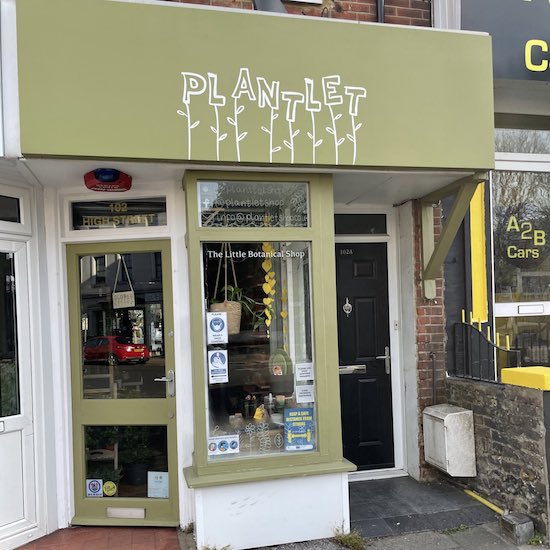 When a mighty oak falls the sunlight blazes in. The resulting glade sees green shoots appear with all manner of species stimulated to grow and compete for this finite opportunity. A metaphor for business, the British high-street has seen many old oaks fall over and die recently, and, with optimism, the light that this allows to shine into the market could make it a boom time for new independents to open. With people shopping more locally, wanting the opposite of chain stores and craving something different, it is predicted that we will see a flood of independent brands and stores grasping to fill this void.
When a mighty oak falls the sunlight blazes in. The resulting glade sees green shoots appear with all manner of species stimulated to grow and compete for this finite opportunity. A metaphor for business, the British high-street has seen many old oaks fall over and die recently, and, with optimism, the light that this allows to shine into the market could make it a boom time for new independents to open. With people shopping more locally, wanting the opposite of chain stores and craving something different, it is predicted that we will see a flood of independent brands and stores grasping to fill this void.
Left - Image from @ollyrzysko Twitter documenting the new independent stores in Broadstairs
Andrew Goodacre, CEO of Bira (British Independent Retailers Association) says, “It is a fact that people who have lost jobs often look to start their own businesses.”
It is worth noting how much better the leaner, and more flexible independent businesses weathered the pandemic. Recent research from the Local Data Company, the UK's most accurate retail location data company, confirmed there were 31,405 openings of independent units in 2020. Though openings were outweighed by 32,847 closures and resulted in the independent market shrinking by -0.4% (-1,442 units), it compares much more favourably to the chain market which declined by -4.5%, almost 10,000 units.
“We have also seen a resurgence in people shopping locally and there has been a significant increase in service retailing – barbers, hairdressers, cafes, etc.” says Goodacre.
“Indies have a personality and connection with their local communities that cannot be matched by the large chains. This is a good time because more people are shopping locally and care more about their local economy.
“Shopping locally, away from the large city centres, has happened throughout the UK, including London, as the boroughs have prospered at the expense of those shops in the centre or near high volume commuter stations.” says Goodacre.
Olly Rzysko, Founder of Good Candles, recently charted the arrival of numerous new independent retailers in the seaside town of Broadstairs through his Twitter channel @ollyrzysko, “I saw a lot of new units opening up, stores that were previously closed or maybe very tired reinventing themselves.” he says.
“Some of what had been previously pretty dead spots of high street were coming alive with new spaces from Affinity Brewery, a new lifestyle store and one of the most successful stores upgrading to a bigger unit. There were at least 6 new stores and several new places to eat and drink in a tiny town.” says Rzysko.
Why do you think so many independents are opening right now? And why there?
“I think it’s a mix of relatively affordably retail property, a mindset from people that they want local stores and a growing population by the coast that are willing to spend money here.” he says. “E-commerce is amazing if you have a unique product or a specific proposition but a real store can be so versatile and be a hub for the community and the brand.
“Independents can offer some choice, curated choice. I love Selfridges and their curation of product but I can’t go every week. Having some stores locally that can bring together interesting products and in some cases more local ones is really powerful. We’ve had a year of ’buy local’ messaging and I do think people really do want to spend more near to home.” he says.
“A lot of people are going back to offices this year but for many of us that will prob be 3 days a week. That has some significant impact. City centres lose 20% of footfall for every day we work from home (eg 20% of the Mon-Fri traffic for each day), this traffic is now local to where the workers live. They still want to buy lunch or a birthday card or a bottle of wine, but the money will be spent nearer to home.
“It is much easier to change tactics when you’re one store in a small town, much harder when you have shareholders and growth targets.” he says.
To kick start retail after lockdown many within the retail industry were calling for a ‘Shop Out to Help Out’ scheme, urging the government to support the sector by offering customers 50% off the cost of goods at independent retailers up to a maximum price of £10. Positively, since then retail sales volumes grew sharply in April 2021 with a monthly increase of 9.2%, reflecting the effect of the easing of coronavirus restrictions according to the latest figures from the Office for National Statistics. Non-food stores provided the largest contribution to the monthly growth in April 2021 sales volumes, aided by strong increases of 69.4% and 25.3% in clothing stores and other non-food stores respectively.
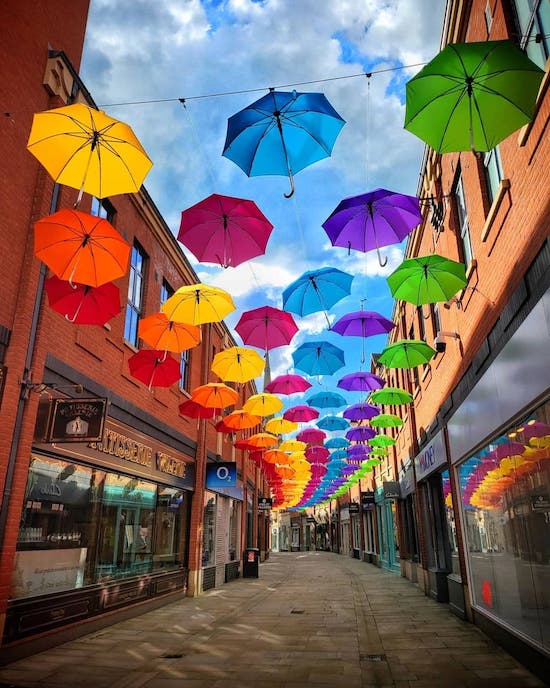
Masato Jones is an independent fashion designer who has recently opened his first store in Leeds. Originally from Japan, he studied at Central St. Martins and started his eponymous label in 2012. He was based in London.
“London is so expensive, and doing bespoke I need to be somewhere in a city.” he says. “London has become slightly too commercial and I found Leeds has a very individual style. I saw young people wearing quite a unique style.
Right - Durham
“It seems the north like my style, the south are very quiet, my first impression was go north. We looked at Manchester and Liverpool, but I like what is going on in Leeds.” he says.
Selling men’s and womenswear, the newly opened store is in Thornton Arcade, just around the corner from Louis Vuitton in the centre of Leeds. It has an atelier on the 1st floor, open for pattern cutting and garment making classes, all tutored by Jones. Speaking before the move, he said, “It is very difficult to survive here in London right now, especially if a small business. The Leeds arcade has all independent shops apart from Starbucks, and we will stock artists’ work as well.”
Independents' Day is the national campaign to celebrate and promote the UK's independent retailers on 4th July. It started out as a small idea in the North of England and has grown into a multi-award-winning worldwide movement. Independents' Day UK is a not-for-profit campaign that exists to support and promote independent retail businesses across the UK all year round, but with an annual focus on July 4th. On July 4th retailers get involved by running special events and promotions including themed window displays, high street festivities, discounts and offers.There is now a network of ‘Totally Locally Towns’ across the world, sharing ideas, working together and making a difference to their independent businesses.
Further north, the City of Durham Parish Council has launched ‘Indie Durham City’. Managed by Gateshead-based retail consultants CannyInsights.com. It has been running since May 2020 to support and promote independent shops, cafes, restaurants, bars and other businesses in Durham’s historic city centre.
Graham Soult, Retail Consultant at Canny Insights says, “Indie Durham City was created in response to the pandemic to support and promote independent businesses. I’m helping make them more digital, update their Google listings, Facebook etc. all with free support from me.”
By helping them digitally it has increased awareness of the physical place to draw shoppers in.
“Initially they were really cautious about using those channels, but they are embracing them a lot more, all sharing updates in a given location which makes it a destination place.” he says.
The city social media has amplified the message. “Facebook, Instagram, Twitter are really important in providing footfall, people will check you out beforehand. You get that verification, the retailers are telling me they came in today and said they saw me on Facebook.” he says.
“There has been a flurry of independents,” says Soult. “We saw this before Christmas when 5 new independents opened in that period, and there’s another 4 new independents in a 200 metres stretch in the city. There’s clearly an appetite.” he says.
“The smaller towns that already have a independent cohort already, those places are proving quote robust with people living close by.” says Soult.
"It’s the in-between towns, they aren’t top tier, nor small market towns, places like Warrington and Middlesborough, who have the biggest reinvention ahead of them.” he says. “Get all the key stakeholders, like the council and landlords all working together, and the places doing that have that energy all pushing in the right direction.” says Soult.
People are seeing more independents because they are spending more time in their locales. There’s also not as much pull from the city or shopping centres with the widespread and much publicised bankruptcies of huge retail chains. There’s something quite sad about city centres right now with empty shops and boarded up retail units. It’s currently cooler and more original shopping local and doing business directly with the owner. There’s also a need and desire to tap into their knowledge and expertise and have a human connection.
These independent businesses still need online and social media to drive people to their physical stores, and it works better collectively. It’s very much stronger together. But, they need to do more than simply exist. They are competing for the pounds in people’s pockets, and while they probably won’t be able to match online on price, they can compete on originality, convenience, service and, most importantly of all, that personal touch.
Buy TheChicGeek's latest book FashionWankers - HERE
Check out TheChicGeek's new shop of fabulous plants & books - Give me Penis Cactus!
ChicGeek Comment Luxury Local
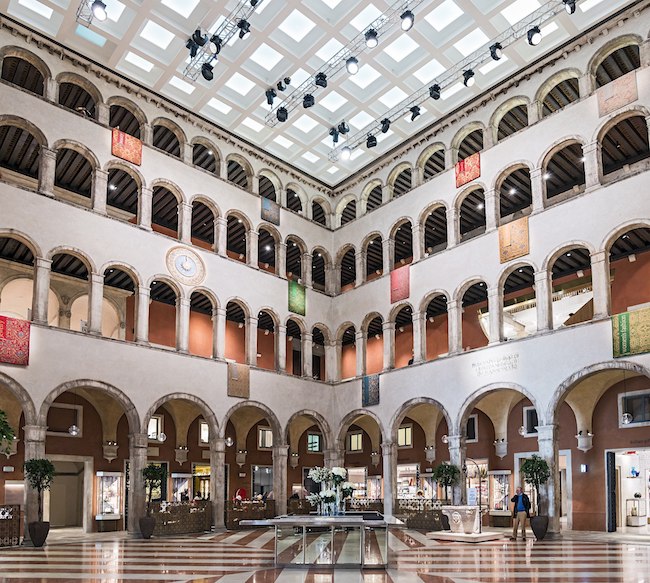
The capitals of Europe were long destinations for foreign tourists, most notably Chinese and Arabic visitors, to fill their shiny Rimowa suitcases to bursting with luxury goods. Buying a new Hermès bag on the Rue du Faubourg Saint-Honoré or a bespoke suit on Savile Row felt more authentic and could seduce many an international visitor to spend, spend, spend.
Left - Interior of LVMH duty-free travel division DFS's T Fondaco dei Tedeschi in Venice
 David M Watts, Fashion Industry Advisor, says, “Given they (LVMH) have deep pockets it will be possible for them to refocus on local markets in Europe but not without its challenges given the continued state of lockdown all across the world.
David M Watts, Fashion Industry Advisor, says, “Given they (LVMH) have deep pockets it will be possible for them to refocus on local markets in Europe but not without its challenges given the continued state of lockdown all across the world.
Right - Artist's impression of the new, yet to open La Samaritaine in Paris
Check out TheChicGeek's new shop of fabulous plants & books - Give me Penis Cactus!
ChicGeek Comment Where’s the ‘We Heart Shops’ Campaign?
 People love good shops. It might not be cool to admit it, but watching the hordes of people flocking after each and every lockdown to their local high-street is testament to this being true. While online shopping has seen record growth over the past year, nearly £7 in every £10 is still spent offline. According to the UK Government’s Office of National Statistics internet sales as a percentage of total retail sales (ratio) (%) hit a record 36% in November 2020. Online had been growing steadily towards 20% of total retail sales, but, thanks to lockdowns and the COVID outbreak, it has leapt to above 30%. But, eventually the growth with slow and then will plateau. So, where is the optimism around physical retail?
People love good shops. It might not be cool to admit it, but watching the hordes of people flocking after each and every lockdown to their local high-street is testament to this being true. While online shopping has seen record growth over the past year, nearly £7 in every £10 is still spent offline. According to the UK Government’s Office of National Statistics internet sales as a percentage of total retail sales (ratio) (%) hit a record 36% in November 2020. Online had been growing steadily towards 20% of total retail sales, but, thanks to lockdowns and the COVID outbreak, it has leapt to above 30%. But, eventually the growth with slow and then will plateau. So, where is the optimism around physical retail?
Left - Do we need a national campaign to remind people how good shops can be?
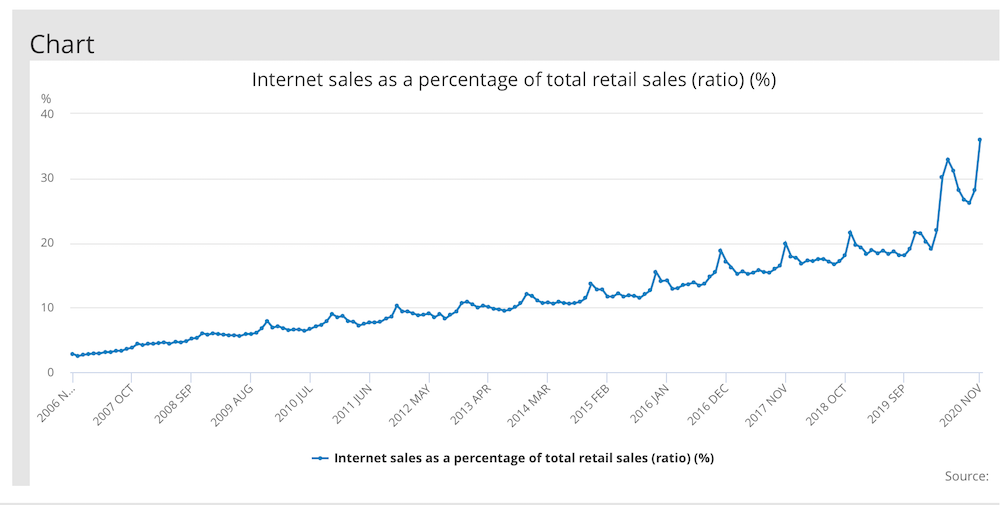
Check out TheChicGeek's new shop of fabulous plants & books - Give me Penis Cactus!
More...
ChicGeek Comment Lockdown Sizing
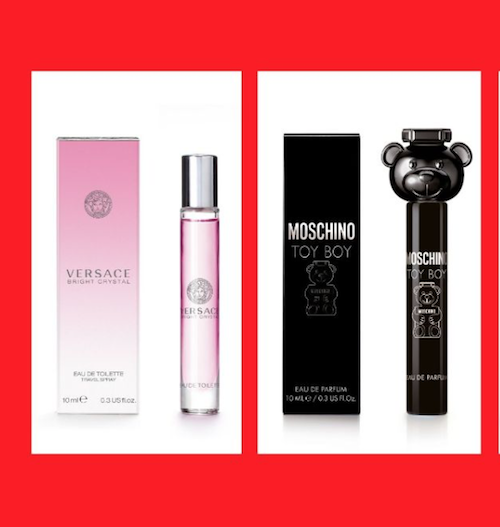 There was a time when the sizing of perfume and fragrance couldn’t get any bigger. Brands and designers were piling into flacons of 200ml and upwards, trying to squeeze as much money as possible out of consumers for their hit ‘juices’. Two hundred millilitres is more conducive to the drinks cabinet than the bathroom. Then came lockdowns.
There was a time when the sizing of perfume and fragrance couldn’t get any bigger. Brands and designers were piling into flacons of 200ml and upwards, trying to squeeze as much money as possible out of consumers for their hit ‘juices’. Two hundred millilitres is more conducive to the drinks cabinet than the bathroom. Then came lockdowns.
Left - Brands such as Versace and Moschino are producing 'lockdown sizes' of 10ml fragrances for £20
A McKinsey report in May, 2020, said, with regards to the global beauty market, “2020 will be one of the worst years it has ever endured.” The report said consumer retail spending on beauty products was experiencing a sharp decline (up to 20%) as well, leading to an unprecedented projected $175 billion USD loss in revenue for the industry this year. 90% of women stated, in the report, they used little to no makeup while working from home.
It said, in May, “based on the scenarios most expected by global executives and current trends, we estimate global beauty-industry revenues could fall 20 to 30 percent in 2020. In the United States, if there is a COVID-19 recurrence later in the year, the decline could be as much as 35 percent.”
Unilever too has reported declining revenues in its personal care division. An update in April warned about shrinking personal care sales because more people working from home meant they were washing their hair less often, putting off shaving and even ditching deodorant. Four months on, in its Q3 report, it said personal care sales had continued to slump.
Graham Pitkethly, Unilever’s chief financial officer, said "fewer personal care occasions from going to work or socialising” impacted sales. Skincare declined high-single digit and deodorants declined low-single digit. Though there was a slowing of declines when we came out of lockdown during the summer.
The greedy fragrance industry has been built upon a biggest is best attitude when it comes to their products, and especially gifting, when, in fact, a little should go a long way. Brands have realised that demand has changed and are now launching smaller sizes in 10ml or 20ml editions. Moschino and Versace has 10ml options in many of their fragrances including ‘Toy Boy’, ’Dylan Blue’ and ‘Eros’ for £20. Eight & Bob has added a range with a 30ml (with optional artisan leather case), a size which isn’t often seen in bridge/niche brands. Much of this sizing was ironically called ‘Travel Size’ when, in fact, it’s the lack of travel and leaving the house which is creating the demand. Tocca has a ‘Travel Trio Set’ containing three 20ml bottles, while Goutal Paris is offering a ‘discovery set’ containing four classic 10ml fragrances from their range.
Sarah Binns, Head of Training at KGA, one of the UK & Ireland’s leading fragrance distributors, currently representing over 25 premium perfume brands, says, “Ironically I saw this ‘travel size’ trend start pre COVID-19 in response to the always on the go lifestyle and as a way to entice younger consumers into the category with a lower price point on luxury brands. Retailers had started requesting smaller sizes in fragrances to showcase in their pick ’n’ mix style locations near till points. It is interesting to see how this new size category has become so valuable in the current climate too.” she says.
“I think a lot of brands had started to develop these sizes pre lockdown for other reasons, but they have really come into their own with the current situation. Brands are aware that consumers are nervous to spend on something they can’t try first so this is a great solution.” says Binns.
The McKinsey report said, in most major beauty-industry markets, in-store shopping accounted for up to 85 percent of beauty-product purchases prior to the COVID-19 crisis, with some variation by subcategory. Even online-savvy American millennials and Gen Zers (those born between 1980 and 1996) made close to 60% of their purchases in stores. With the closure of premium beauty-product outlets because of COVID-19, approximately 30 percent of the beauty-industry market was shut down. Some of these stores will never open again, and new openings will likely be delayed for at least a year.
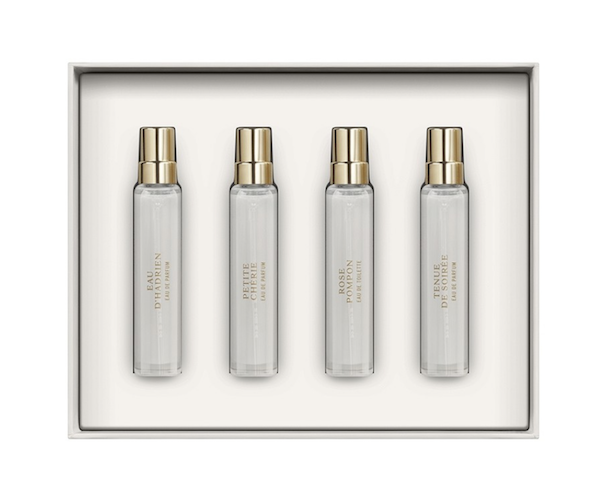
Suzy Nightingale, Senior Writer at The Perfume Society says, “We’re definitely seeing more fragrances offered in smaller ‘try me’ sizes, and although beauty products have been used less in lockdown; we’ve actually seen a huge rise in sales of our discovery boxes and brand sets, which offer sample vials, miniature bottles and travel sizes to try at home. Classic scents have even made a comeback as people reach for a familiar fragrances as a comfort blanket, reminding them of happier times.” she says.
Right - Goutal Paris 4 x 10ml fragrance sizes exclusively available at John Lewis: www.johnlewis.com - £68
“I think there’s been a desperate longing for ‘newness’, and we’ve also had fragrance lovers tell us they don’t want to associate this year with a single scent.” says Nightingale. “Simultaneously, many fragrance houses suddenly realised that, if people can’t get to shops or, when they do, tester bottles aren’t readily available anymore. This fast-tracked something we’ve all been asking for anyway: smaller size bottles we can try before we buy, or use to explore a diversity of scents or fragrance notes out of our usual comfort zones.
“I definitely see this trend continuing - online previously had the hurdle of being a difficult place to buy your first full-size bottle of perfume if you’d not smelled it already. Nowadays, people want greater choice and the chance to flirt with lots of fragrances. Sometimes more IS more, but it doesn’t always mean a bigger bottle…” she says.
While the term ‘lockdown sizing’ won’t be used by the brands, it’s an interesting twist on the entry ‘travel size’ offer. These prices are keener and entice people to buy before they try. This is the beauty industry's version of a micro-bag; an entry level product aimed at younger and less affluent consumers.
“Smaller sizes bring accessibility, the signature scent is becoming a thing of the past and it is much easier to build a large fragrance collection with these entry price options. In an environment when you often can’t test the product before you purchase, it’s a smaller risk to invest in a mini size first.” says Binns.
“I think this trend will continue within the COVID-19 environment as a way to experience new products before making a larger investment in the full size. Once we are able to travel again I’m sure that they will become even more popular for their portability.” she says.
How many people are wearing fragrance at home, or, at least, in the quantity they used to without social engagements and interaction with other people or work colleagues? The cheaper prices are also a factor in their popularity. When fully branded and looking as good as the full size bottles, rather than a simple tester, these items look much more desirable.
“Consumer confidence is low and this always has an effect on spending within beauty. People are reaching for products that make them feel good as oppose to looking or smelling good for other’s benefit. Fragrance sales were hit hard at the beginning of the pandemic but we have seen a steady increase as people rediscover the joy of treating themselves or showing love to others with a gift that encourages wellbeing” says Binns.
Sales in smaller sizes are better than no sales at all for the beauty industry, and the margins will be higher. The fragrance industry will hope these smaller lockdown sizes will encourage and continue the habit of individuals wearing fragrance even if we continue to be on our own.
Buy TheChicGeek's latest book FashionWankers - HERE
Read more expert ChicGeek Comment - HERE
Check out TheChicGeek's new shop of fabulous plants & books - Give me Penis Cactus!
ChicGeek Comment The Economy Of Bad Styling

If a picture paints a thousand words, what does a stylist do? In fashion, they are the story tellers. Stylists, those individuals who decide what and how to dress models and celebrities for many brands’ campaigns and visual assets, have long been taken for granted. Much like photographers and digital cameras, in recent years, their magic of making something look more expensive or chicer than it is has been overlooked and labelled as simply ‘dressing’.
Left - Hedi's idea of cool or just plain bad? Celine
Paula O’Connor, ex Fashion Editor and Consultant, says, “A stylist's job is to tell a story with clothes, to put them into a narrative. This could be for glossy pages of editorial/ magazines or film, or simply co-ordinating everyday outfits to suit someone's lifestyle, whilst understanding perfectly how to translate current trends in fashion into outfits to suit that person’s needs and their lifestyle whilst maximising their image and confidence.”
The majority of people don’t recognise good styling, but they certainly notice bad, and it feels like there’s a lot of it around at the moment.
And, that’s the crux of it, a stylist’s main job is to make, professionally, things or people not look bad. With many brands making cuts or struggling to produce content in lockdowns with less travel, then bad styling is becoming much more noticeable. While some brands may go deliberately for the slightly more ‘edgier’ or grungier look, even Balenciaga has a slickness in its ugliness, there’s a difference between this and simply bad. It’s the fashion equivalent of a hipster venue asking you to drink out of jam jars. It’s a cost saving spun as being cool.
Lockdown has really brought to light the importance of good styling and therefore a good stylist. Marketeers listen up. We became so blasé about perfect images, that, I think, we took them for granted pre-COVID, but it’s only, now, we can really see the difference and it’s coming from even the biggest of brands.
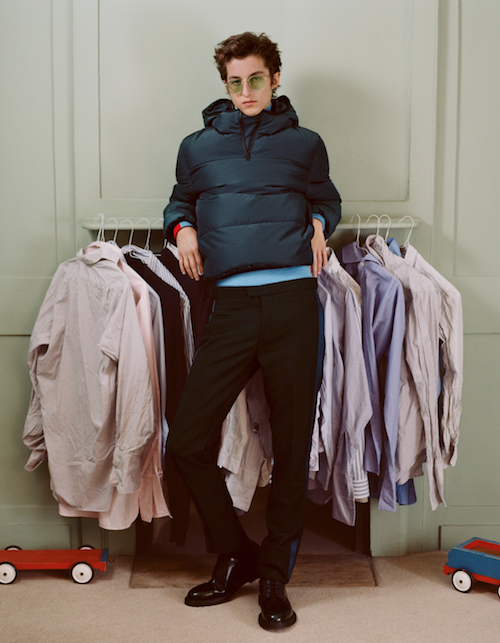
“Stylists are definitely taken for granted and they do not get enough respect for the skills they have”, says Jessica Punter, Freelance Stylist with almost 20 years’ experience, associate lecturer and Ex GQ Style and Grooming Editor.
“Stylists usually have an eagle eye over the whole fashion industry and draw on influences from a wealth of other areas such as art, music and pop culture. They can help steer or hone a collection and create fresh appeal. They can bring a lot to the table creatively, if given the chance.” she says.
Good styling has many contributing factors; concept, art direction, casting (model choice), location, props, looks (outfit choice), lighting, and, finally, how it’s all put together. It takes a refined eye and that’s worth paying a professional for. Many brands look like they’re doing it all DIY and it does nothing for their products.
Like anything visual, what is good and bad is subjective, but there’s a level. It also changes according in local markets and who they are targeting. It’s knowing which images to use when and where. While Europeans may scoff, the images could appeal to Asia or America.
Right & Below - Paul Smith AW20 looking like a hot mess?
“First, international brands cater to different markets. What appeals to one territory might not appeal to the next.” says Punter. “I often think of how different Nike US is to Nike EU. I know which I prefer, but it's all about knowing your market. Second, in the pandemic era we are seeing skeletal crews and brands needing to improve 'efficiencies'. During the first lock down I heard models were dressing themselves with samples sent to the photographer. I also heard celebrities were wearing outfits they had worn before for public appearances, rather than relying on a stylist to bring fresh looks. Third, there's a lot of dross product around. If a collection is really weak it can't necessarily be saved by styling.” she says.
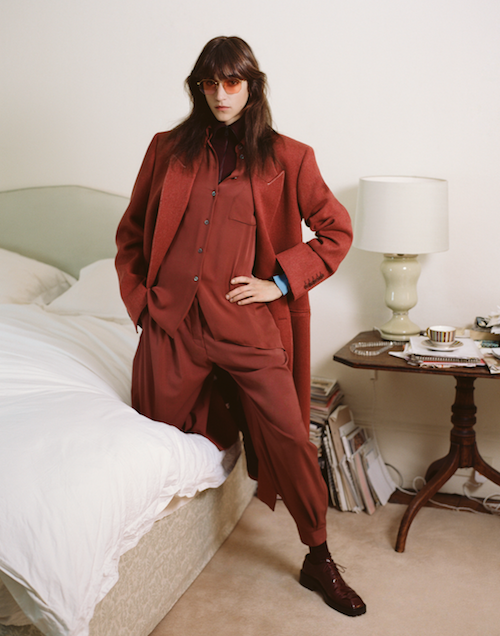
Even the biggest brands have trimmed their expenditure. Do you think brand’s making cutbacks can be seen in their visuals?
“Yes, I am sure it is deemed necessary to make cuts, to use in-house staff and to limit outsourcing, but these short term savings inevitably have a negative impact on overall quality.” says Punter.
“There is definitely a noticeable difference in shoots that reflects that cutbacks. E-comm is increasingly shot flat instead of on a model, and there is a simpler approach to selling.” says O’Connor.
Can we put this down to lockdown issues of lack of expensive locations or doing things from home etc.?
“Certainly the impact can't be ignored. At the same time there have been lots of amazing distanced shoots. Self-styled Robert Pattinson for GQ US was a highlight for me. However, the clothes he wore were still selected in advance by a stylist, and no doubt heavily mood boarded and pre-styled into looks, which he may well have adapted. But the overall lesson is really that nothing can replicate a strong creative crew working closely, physically together.” Punter says.
“I think, previously, stylists researched and referenced a lot more.. films, art, photography catwalks .. but now everything is so fast and immediate, so there is a lot of imagery that is 'thin' in content. Also social media has boosted consumerism.” O'Connor says.
There is no formula for good styling. You need talented people, but it’s also an instinct, especially in something as unpredictable as fashion. A good stylist will be able to make the best of what they have, even if the budgets are tight.
“No one realises how much hard work goes into styling, It depends on the client, but there is never enough budget for what they want, so stylists sometimes have to work miracles!” says O’Connor.
 There too isn’t a formula for bad styling, but get a few of those contributing factors - listed above - wrong and the chances are the pictures won’t be very good. It’s a false economy for brands and marketing departments to make cuts in this area, especially if they’re trying to peddle ‘luxury’. They are devaluing the product and the brand.
There too isn’t a formula for bad styling, but get a few of those contributing factors - listed above - wrong and the chances are the pictures won’t be very good. It’s a false economy for brands and marketing departments to make cuts in this area, especially if they’re trying to peddle ‘luxury’. They are devaluing the product and the brand.
Left - AW20 Superdry styling looking far from contemporary
A great stylist is “someone who creates trends rather than follows them and has an innate understanding of what makes a great image.” says Punter, and this is something not worth skimping on.
Buy TheChicGeek's latest book FashionWankers - HERE
Read more expert ChicGeek Comment - HERE
Check out TheChicGeek's new shop of fabulous plants & books - Give me Penis Cactus!